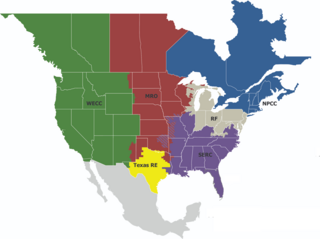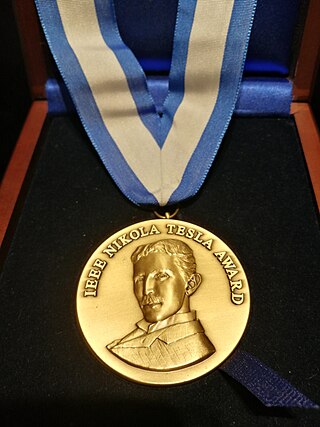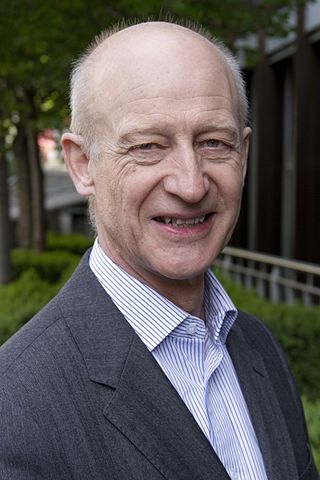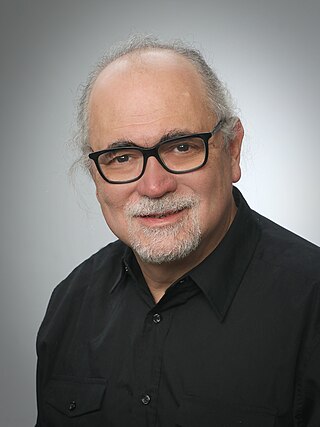
The North American Electric Reliability Corporation (NERC) is a nonprofit corporation based in Atlanta, Georgia, and formed on March 28, 2006, as the successor to the North American Electric Reliability Council. The original NERC was formed on June 1, 1968, by the electric utility industry to promote the reliability and adequacy of bulk power transmission in the electric utility systems of North America. NERC's mission states that it "is to assure the effective and efficient reduction of risks to the reliability and security of the grid".

A Flexible Alternating Current Transmission System (FACTS) is a family of Power-Electronic based devices designed for use on an Alternating Current (AC) Transmission System to improve and control Power Flow and support Voltage. FACTs devices are alternatives to traditional electric grid solutions and improvements, where building additional Transmission Lines or Substation is not economically or logistically viable.

Power engineering, also called power systems engineering, is a subfield of electrical engineering that deals with the generation, transmission, distribution, and utilization of electric power, and the electrical apparatus connected to such systems. Although much of the field is concerned with the problems of three-phase AC power – the standard for large-scale power transmission and distribution across the modern world – a significant fraction of the field is concerned with the conversion between AC and DC power and the development of specialized power systems such as those used in aircraft or for electric railway networks. Power engineering draws the majority of its theoretical base from electrical engineering and mechanical engineering.

Nathan Cohn was an American electrical engineer best known for his work in the development of automatic control techniques for interconnected electric power systems. He worked for Leeds & Northrup for 48 years.

The IEEE Nikola Tesla Award is a Technical Field Award given annually to an individual or team that has made an outstanding contribution to the generation or utilization of electric power. It is awarded by the Board of Directors of the IEEE. The award is named in honor of Nikola Tesla. This award may be presented to an individual or a team.
Tomas Enciso Dy-Liacco was a Filipino-American electrical engineer, researcher, and developer often referred to as the father of modern energy control centers.
Robert H. Park was an American electrical engineer and inventor, best known for the Park's transformation, used for simplifying the analysis of three-phase electric circuits. His related 1929 concept paper ranked second, when looking at the impact of all twentieth century power engineering papers. Park was an IEEE Fellow and a member of the National Academy of Engineering.
Surya Santoso is an associate professor of Electrical Engineering at the Cockrell School of Engineering at the University of Texas at Austin and directs the Laboratory for Advanced Studies in Electric Power & Integration of Renewable Energy Systems (L-ASPIRES). A senior member of Institute of Electrical and Electronics Engineers (IEEE), he is actively involved in the IEEE Power and Energy Society and has hosted the IEEE Plain Talk on Power Quality in IEEE Power and Energy General Meeting since 2010.

Roy Billinton is a Canadian scholar and a Distinguished Emeritus Professor at the University of Saskatchewan, Saskatoon, Saskatchewan, Canada. In 2008, Billinton won the IEEE Canada Electric Power Medal for his research and application of reliability concepts in electric power system. In 2007, Billinton was elected a Foreign Associate of the United States National Academy of Engineering for "contributions to teaching, research and application of reliability engineering in electric power generation, transmission, and distribution systems."

Claes Göran Andersson is a Swedish academic. He was a full Professor of Power Systems in the Department of Information Technology, Swiss Federal Institute of Technology in Zürich, Switzerland, in 2010–2016 and is now emeritus. He is a Fellow of the Royal Swedish Academy of Engineering Sciences, Royal Swedish Academy of Sciences, and the Swiss Academy of Engineering Sciences. He was also elected as an International Member of the US National Academy of Engineering in 2016 for contributions to the development of high-voltage direct current (HVDC) technology and methods of power system voltage stability analysis.
Mangalore Anantha Pai was an Indian electrical engineer, academic and a professor emeritus at the University of Illinois at Urbana–Champaign. A former professor of electrical engineering at the Indian Institute of Technology, Kanpur, he is known for his contributions in the fields of power stability, power grids, large scale power system analysis, system security and optimal control of nuclear reactors and he has published 8 books and several articles. Pai is the first India-born scientist to be awarded a PhD in electrical engineering from the University of California, Berkeley.

Marcelo Godoy Simões is a Brazilian-American scientist engineer, professor in Electrical Engineering in Flexible and Smart Power Systems, at the University of Vaasa. He was with Colorado School of Mines, in Golden, Colorado, for almost 21 years, where he is a Professor Emeritus. He was elevated to Fellow of the Institute of Electrical and Electronics Engineers (IEEE) for applications of artificial intelligence in control of power electronics systems.

Md. Azizur (Aziz) Rahman was a Bangladeshi born Canadian inventor of modern energy-efficient electric motors that span multiple industry applications. He was an electrical engineer, professor, researcher and scientist. He is internationally recognized as one of the founding innovators of modern power engineering and a pioneer in the development and application of interior permanent magnet motors and associated drive technology-used in the world's first mass-produced hybrid vehicle, the Toyota Prius. Since launching the Prius in 1997, Toyota surpassed global sales of 15 million hybrid vehicles in 2020, all of which use Dr. Rahman's IPM motor drive. His research contributions were broad and adopted in a wide range of electric motor applications ranging from vacuum cleaners, air conditioners, elevators to aircraft.
Chanan Singh is an Indian-American electrical engineer and professor in the department of electrical and computer engineering, Texas A&M University. He was named Irma Runyon Chair Professor and Texas A&M System Regents Professor.
Reliability index is an attempt to quantitatively assess the reliability of a system using a single numerical value. The set of reliability indices varies depending on the field of engineering, multiple different indices may be used to characterize a single system. In the simple case of an object that cannot be used or repaired once it fails, a useful index is the mean time to failure representing an expectation of the object's service lifetime. Another cross-disciplinary index is forced outage rate (FOR), a probability that a particular type of a device is out of order. Reliability indices are extensively used in the modern electricity regulation.
Loss of load in an electrical grid is a term used to describe the situation when the available generation capacity is less than the system load. Multiple probabilistic reliability indices for the generation systems are using loss of load in their definitions, with the more popular being Loss of Load Probability (LOLP) that characterizes a probability of a loss of load occurring within a year. Loss of load events are calculated before the mitigating actions are taken, so a loss of load does not necessarily cause a blackout.
Electrical grid security in the United States involves the physical and cybersecurity of the United States electrical grid. The smart grid allows energy customers and energy providers to more efficiently manage and generate electricity. Similar to other new technologies, the smart grid also introduces new security concerns.
In an electrical grid, contingency is an unexpected failure of a single principal component that causes the change of the system state large enough to endanger the grid security. Some protective relays are set up in a way that multiple individual components are disconnected due to a single fault, in this case, taking out of all the units in a group counts as a single contingency. A scheduled outage is not a contingency.
Mario Veiga Ferraz Pereira is a Brazilian scientist and engineer known as Mario Veiga in Brazil and Mario Pereira outside Brazil. He founded PSR, a consulting and software development company in the energy sector. He is best known for his work in electrical engineering and operations research. Mario Pereira is also known for developing the Stochastic Dual Dynamic Programming algorithm, used to solve multistage stochastic programming problems, in particular in the context of power system operation and planning.
Mariesa Louise Crow is an American retired electrical engineer and academic who was the Fred W. Finley Distinguished Professor of Electrical and Computer Engineering Emeritus and the vice provost for research at the Missouri University of Science and Technology. Her research contributions include works on energy storage, microgrids, and their applications in renewable energy systems.









